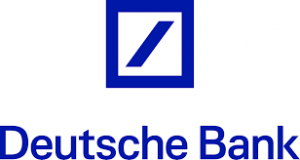 The head of forex research for Deutsche Bank noted that volatility in most markets has thus far by-passed the traditional currency markets.
The head of forex research for Deutsche Bank noted that volatility in most markets has thus far by-passed the traditional currency markets.
George Saravelos is Deutsche Bank’s Global Co-Head of FX Research and he was on with Andrew Busch, the Chief Market Strategist for the Commodities Futures Trading Commission (CFTC), on Busch’s weekly podcast, CFTC Talks.
“Myself coming from a currency background- when you look at all other asset classes- people are wondering why that hasn’t fed into currencies.” Saravelos noted during the podcast. “You are seeing a lot of volatility in certain assets- particularly in the equity space- but you are seeing very little in the currency space.”
When Saravelos refers to currency, he is referring to traditional currencies and not virtual currencies which continue to experience a great deal of volatility.
Saravelos identified three main drivers of volatility in equities. “One part seems to be technical,” noting that before the drop in February, the market had gone through the longest uninterrupted period where the market didn’t drop by more than 5% since WWII.
The second reason was “a number of policy surprises related to trade from the US administration.” Saravelos.
The VIX, which measures market volatility, had its own technical issues, Saravelos noted.
Saravelos noted that this was the opposite in currency, with the Vol, which measures volatility in currencies, remaining very low.
The Dollar Conundrum
While volatility has remained low, both Busch and Saravelos noted that the US dollar has acted in a counter intuitive manner.
“The greenback kind of seems to be a bit of a conundrum,” Busch noted, “Normally, when a central bank is raising interest rates due to a stronger economy, it seems to lead to an environment of strength for the dollar.”
The Federal Reserve has indeed been raising interest rates since late 2016 because the economy has been strengthening as Busch laid out; so, by his hypothesis, one would expect strength in the dollar.
Saravelos agreed: “You’re spot on It is one of the biggest conundrums and I would say surprises to the market that you have seen these big moves higher in US (Treasury Bond) yields and the Dollar has been weak.”
“I think markets provide something to confuse us with everyday.”
Saravelos said this was happening because of a paradigm shift from the dynamic from 2008-2016. He said three things were driving this: 1) flows into US assets by foreigners has decreased- noting that over the last six to nine months foreigners have been buying far less US bonds which is causing their yield to rise, 2) the dynamics surrounding the Fed’s rate raises. He said that while they are raising rates they are raising them in a much more deliberate manner than previous rate rises and 3) US administration approach on trade.
“When China is running a big surplus against the US, what it’s been doing in the background is that it’s been recycling those dollars back into the US market.”
President Trump, in what may define his presidency, has begun a bold policy on trade and unpredictable policy on trade.
He is threatening tariffs on countries including China- which he believes achieves a trade imbalance by manipulating its currency- unless free trade deals are negotiated or renegotiated so that they are fairer to the US.
Opponents immediately warned that this would set off a trade war while proponents said it was long overdue and Trump was only holding cheating countries accountable.








